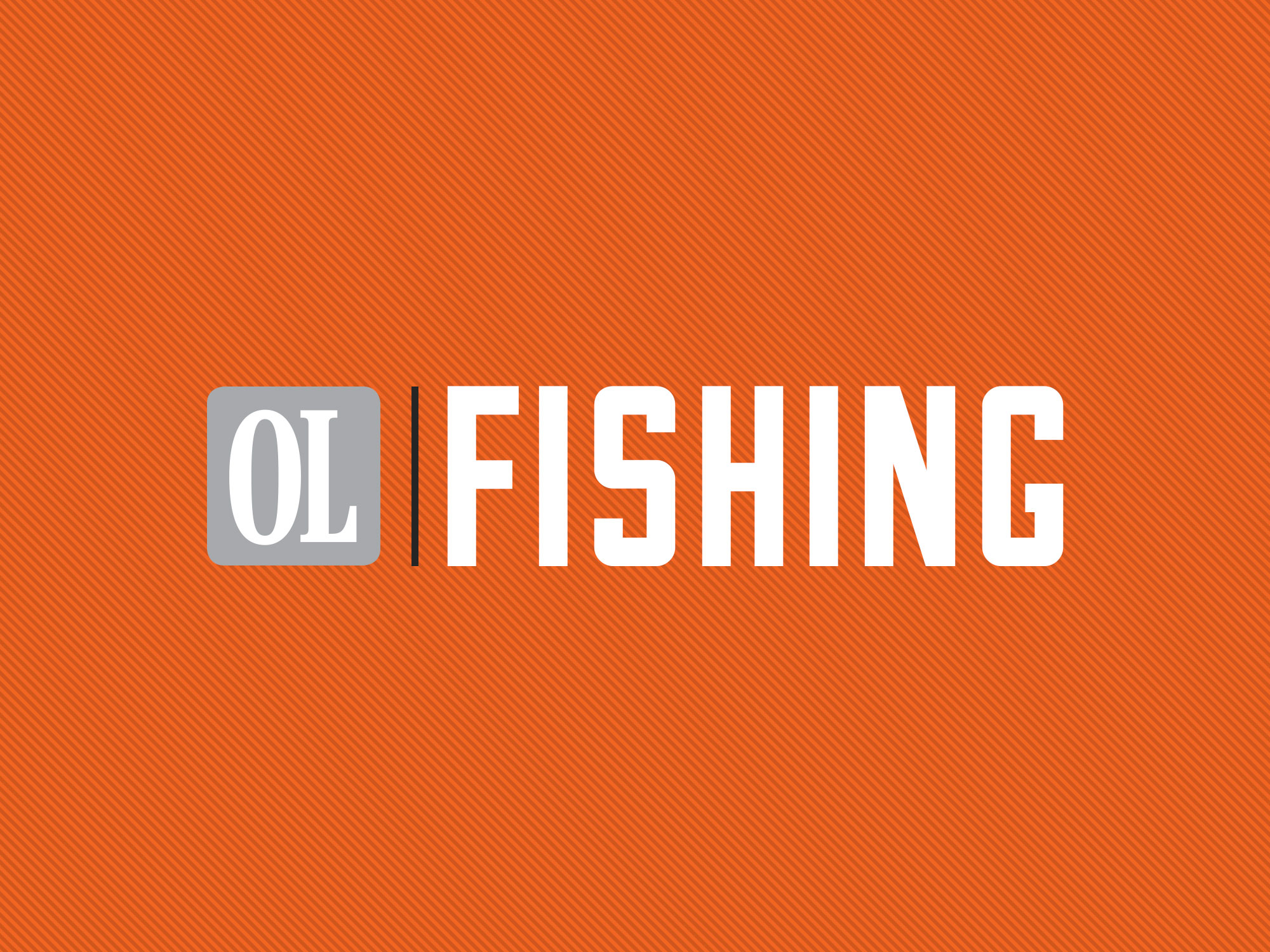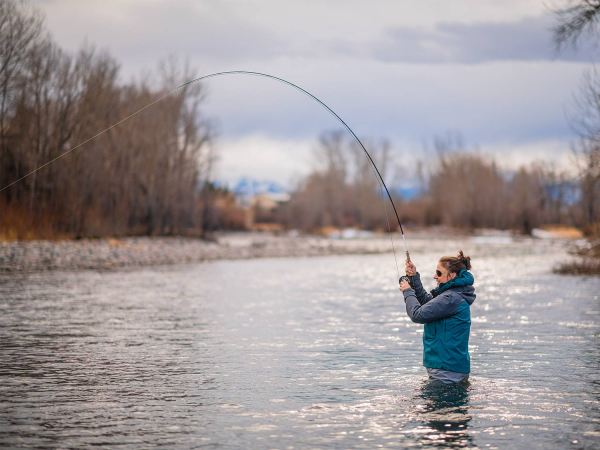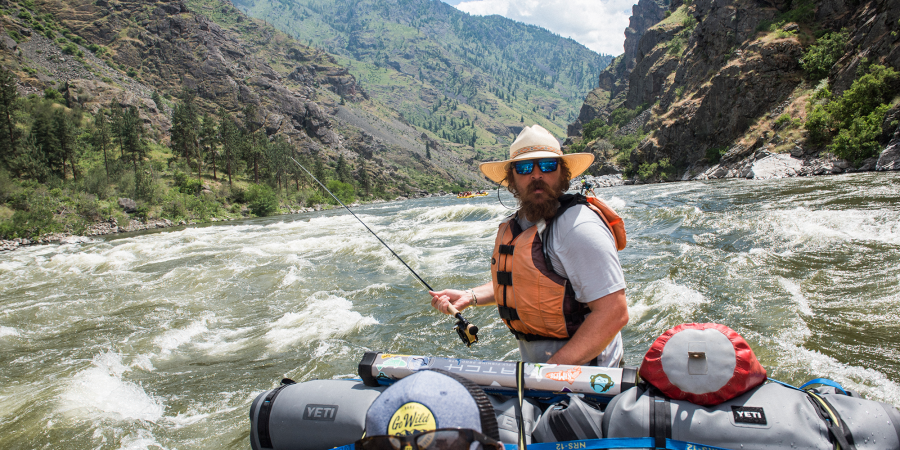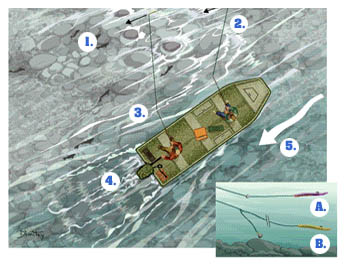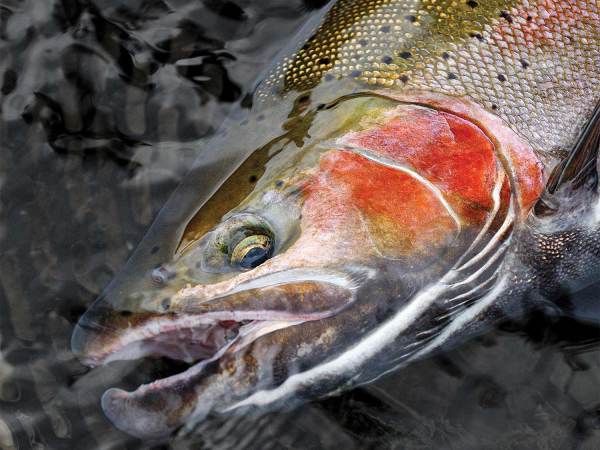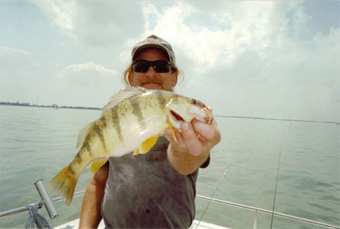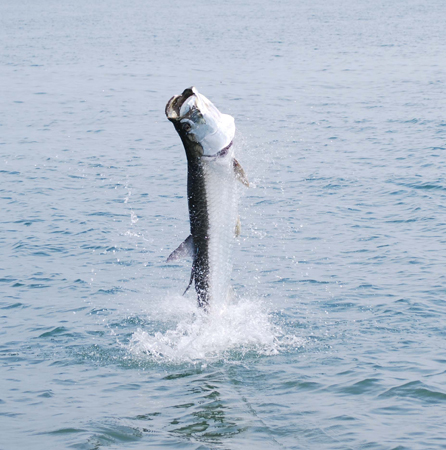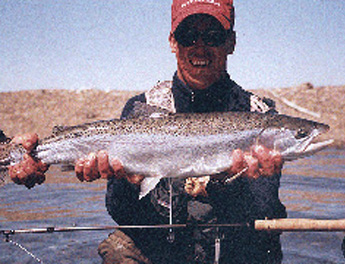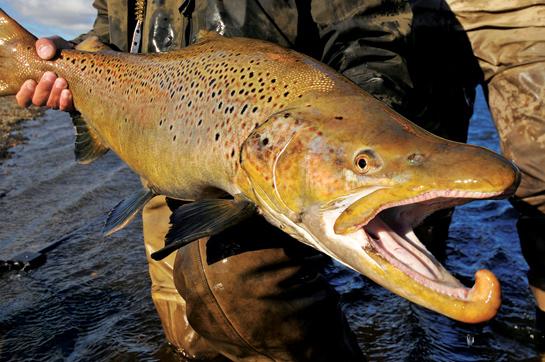Road Trip Trout Adventure – Day 3
>>SEE PHOTOS FROM TODAY HERE!<<
The best way to experience a river is to ride it, to feel the pull of its current and the chatter of its riffles in a boat.
For an angler, fishing from an expertly piloted boat can be devastatingly effective, a perch above the best water, a casting platform from which to drift a lure or fly with exactly the same velocity of the river.
So I was excited to spend our third day on the Yellowstone River, floating through the very heart of Paradise Valley. We are hooking up with Troy’s friend Matson Rogers, a cheerful, gainfully employed trout bum who owns Angler’s West fly shop and guiding service (montanaflyfishers.com) in Emigrant, Montana, about halfway between Yellowstone Park and Livingston.
It’s a treat to get to fish with Matson, a veteran of 15 years of guiding anglers who now spends more time in his shop than on the river. As we drive to Pine Creek, where we’ll launch for the 11-mile float to Livingston, Matson describes the river.
“It’s the longest undammed river in America, and because it’s not constrained, it changes all the time. Shorelines change, channels move, gravel bars migrate. It’s a freestone stream but it doesn’t have the sort of aquatic hatches you’d associate with a freestone. We don’t have much for mayflies or stoneflies. We get an intense caddisfly hatch in May and about every three years we get a decent salmonfly hatch, but this is a terrestrial river. Today we’ll be throwing grasshopper imitations, but big ants and beetles can work at times.”
TROPHY HUNTING
As we load the boat, I notice Matson puts in a couple of his own rods, including one rigged with a frog pattern the size of a beer can.
I expect we’ll pick up the fourth species of this trip, a brown trout, and I’m hopeful we will tangle with one of the big, surly browns that the lower ‘Stone is known for. A fish big and confident enough to swallow that frog pattern.
As we push off, Matson’s expectations are tempered.
“The river is going through a transition right now from its summer to its fall pattern. The fish are moving and stacking up in transitional water, so our first task is to find where they are.”
We add a big Prince nymph, a wet fly, to drift below my Mormish Hopper dry fly. The second fly should appeal to cautious trout, or bruisers that are hanging in deeper water.
It’s clear from the start that Matson knows his stuff. He barks out casting directions, describing my target as numbers on a clock face. He counsels me to mend my line so my flies drift naturally, to shorten or lengthen my cast.
I want to lift my laser gaze from my fly. I long to take in the stunning panorama of Paradise Valley, the unbelievably steep and craggy Absoraka Range to the east, the achingly beautiful foothills, the ancient cottonwoods drifting by. But I don’t dare break my stare in case a trout hits my pattern.
We get into pods of feeding whitefish, which suck up the Prince nymph, and I miss a succession of light-biting trout. We finally land a lively rainbow, then another, then a cutthroat and a cutt-bow hybrid.
We’re getting fish, but they’re modest sized, though they pull like bulldogs in the relentless current.
DISASTER ON THE RIVER
As we are enjoying a refreshing shore lunch, we wave at the few boats that drift by. One is a rubber raft, seriously overloaded with three adults and a kid as well as an assortment of coolers and fishing gear.
Back on the ‘Stone, we catch a few fish and feel the pull of the river getting a little stronger. Matson orients us to shoot a series of chutes and short whitewater froths. We slide through one when I notice a plastic oar on the shore, still wet as though it was recently in the water.
I’m just processing that image when I look ahead and see a cluster of people gathered around a blue rubber raft. Something’s wrong. The raft is capsized and folks on shore are holding it against the tugging current.
Matson doesn’t hesitate. He swings our boat to shore, and starts fact-finding. “Is everyone accounted for? Can we help hold the boat? What can we do?”
Suddenly we’re the center of activity. I pile out of our boat, hold it while Matson ties it off, and we run together to the capsized raft. It’s the same overloaded raft we saw upriver, and we slowly get the story. The boat shot the chute, but instead of making the sharp turn at the bottom, it hit a partially submerged cottonwood and folded in the current, throwing its occupants into the frothing water.
Everybody bobbed to the surface except for one fellow, who tells me he was trapped beneath the tree’s limbs, getting tangled by his clothes.
“I was holding a cooler, so I just threw it off me and launched myself for the surface,” he says. “I wasn’t ready to end it like that, hung up like a fly on a fly strip.”
Matson and I and a burly angler grab the raft and with a synchronized heave, we flip it upright. The frame is bent and twisted. It will need work, but at least its occupants are present and uninjured.
Matson asks the young boy in the boat if he’d like to float with us the mile down to their take-out, and the boy is so happy with the invitation to join his rescuers that he almost leaps into our boat.
TAKE-OUT
We drop the boy off and get serious about hunting big fish. I miss a giant strike, but get non-stop action by those 12- to 14-inch rainbows and cutthroats. I’m happy. We’re catching fish. We’re on the most beautiful river in America. We’re tired, scruffy and windblown. But we’re safe and dry, and in very good company.

